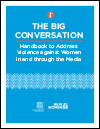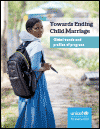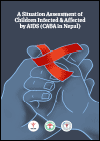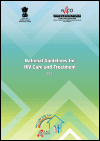What's New
Displaying results 391 - 400 of 4913

Resource | Publications,
The 90–90–90 targets were missed, but not by much. At the end of 2020, 84% of people living with HIV knew their HIV status, 87% of people living with HIV who knew their HIV status were accessing antiretroviral therapy, and 90% of people on treatment were virally suppressed.

Resource | Publications,
We can end AIDS by 2030. Some countries are making remarkable progress, showing us what is possible. But globally, we are simply not bending the curves fast enough to stop the AIDS pandemic.
In this report the Joint United Nations Programme on HIV/AIDS (UNAIDS) issues a stark warning. The red light is flashing. Progress against AIDS, which was already off track, is now under even greater strain as the COVID-19 crisis continues to rage, disrupting HIV prevention and treatment services, schooling, violence-prevention programmes and more.

Resource | Guidelines,
Validation of elimination of mother-to-child transmission, or vertical transmission, of HIV, syphilis and hepatitis B virus (HBV), is an attestation that a country has successfully met standard criteria for elimination, or for being at 1 of the 3 levels of achievement on the ‘Path to Elimination’ while delivering quality services for women, girls and their children, through the life-course, respecting human rights and ensuring gender equality and community engagement.
This document, the third version, adds on EMTCT of hepatitis B virus (HBV), bringing together a package of interventions and metrics to support integrated management and monitoring of vertical transmission across a wide range of epidemiological and programmatic contexts.

Resource | Guidelines,
It cannot be stressed enough that violence against women and girls continues to be one of the most pervasive human rights violations in the world. It acts as both a cause and a consequence of gender inequality, and ranges in impact from adverse effects on the health, safety, productivity and overall well-being of women and girls, to impeding the realization of their rights and contribution to society at large. Despite decades of concerted efforts, at the global, regional and local levels.

Resource | Publications,
After the first five years of the implementation of the ASEAN Regional Plan of Action on the Elimination of Violence against Women, this mid-term review was conducted to take stock of the progress of the implementation of the plan so far, highlighting advances among ASEAN Member States to strengthen the prevention of and response to violence against women in the region. The review highlights how all the priority areas are interlinked to each other.

Resource | Publications,
Child marriage is widely recognized as a violation of human rights and a hindrance to national development. In fact, evidence suggests that the practice of child marriage is closely associated with lower educational attainment, early pregnancies, intimate partner violence, maternal and child mortality, increased rates of sexually transmitted infections, intergenerational poverty, and the disempowerment of married girls. In committing to the Sustainable Development Goals (SDGs), the international community has vowed to end the practice of child marriage by 2030.
This report looks at historical trends, with a focus on selected countries that have recorded significant declines in child marriage prevalence. It offers an overview of changes in the practice of child marriage together with a review of other shifts that have occurred in these countries in terms of girls’ access to education and employment opportunities, as well as economic development and poverty reduction.

Resource | Publications,
The latest publication is the UNODC Handbook "Framework to Measure and Report on Gender-related SDG Results." It has been published to provide a better understanding of progress towards gender equality in UNODC mandated areas. Improving efforts to measure the progress and comparison of gender equality linked to normative, research and technical assistance support provided by UNODC, ensures the better usage of resources, both financial and human and improves the monitoring and reporting of a programme.

Resource | Publications,
The Save the Children Nepal program under the Global Fund HIV grant has implemented a Cash Transfer Program for children living with HIV (CLHIV) in Nepal since mid-April 2014. The Community Care Centre (CCC), managed by the National Association of People Living with HIV (NAP+N), implements the program in 66 districts of Nepal. The program provides 1000 Nepali rupees (approximately 10 USD) a month to CLHIV up to 18 years old.
Youth LEAD, in collaboration with its country partners, Young Key Populations (YKP) Lead Nepal, and NAP+N conducted a national study to assess the situation of CLHIV receiving cash support, including the children affected by AIDS who do not receive the cash support.

Resource | Publications,
The COVID-19 pandemic has raised concerns about the mental health of a generation of children. But the pandemic may represent the tip of a mental health iceberg – an iceberg we have ignored for far too long. The State of the World’s Children 2021 examines child, adolescent and caregiver mental health. It focuses on risks and protective factors at critical moments in the life course and delves into the social determinants that shape mental health and well-being.
It calls for commitment, communication and action as part of a comprehensive approach to promote good mental health for every child, protect vulnerable children and care for children facing the greatest challenges.

Resource | Guidelines,
This global progress in identification of newer drug molecules that are more robust and less toxic, a significant reduction in the cost of therapy and innovative approaches to service delivery and increasing access to treatment have literally transformed the disease from a virtual death sentence in the early 1980s to a chronic manageable disease now.





